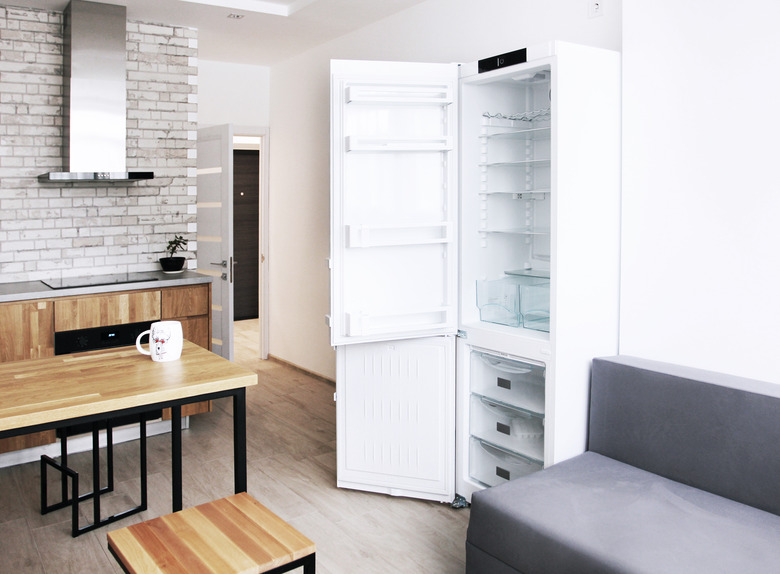Can I Flush My Refrigerator Water Lines?
If the refrigerator water tastes like mildew, then it could be that the water lines need to be properly cleaned. A fine layer of bacteria in a refrigerator water dispenser can begin to grow undetected until the refrigerator water tastes like mildew.
To clean the refrigerator water line thoroughly, follow a few steps and use the proper techniques. A few common household cleaners can safely flush out the lines, and you can have fresh-tasting water in an afternoon.
Tip
Flushing out the refrigerator's water lines can ensure mold doesn't grow and the water continually tastes fresh.
Water Filter Maintenance
The refrigerator's water lines are connected to the same source as the tap water that flows from the kitchen sink faucet. The refrigerator's water filter collects all the minerals and crusty hard water deposits that flow through the lines. These are typically located inside the refrigerator and need to be changed out every three months or so.
Filters actually don't clean the water so much as they remove minerals and other hard water deposits that can make the water from the refrigerator dispenser have a bad taste. Changing the filter regularly will keep the water that is dispensed from the refrigerator tasting fresh. However, it won't keep bacteria from finding its way into the water that you drink that comes from the refrigerator.
An old filter long-overdue for replacement can lead to clogged lines and an odor from mineral build up within the plastic tubing. Clogged lines in a wet environment can lead to mold growth in the ice maker or around the water dispenser.
Unclog Refrigerator Water Lines
Before you begin, unplug the water dispenser and turn off the water valve that lets the water flow to the fridge. How to Remove Black Mold notes that the water line needs to be cleaned out regularly to keep it free from mold growth.
Use a screwdriver to remove the ice maker line from the refrigerator. Empty the water from the reservoir that is typically behind the crisper. Vinegar can serve as a good refrigerator water line cleaner. Clean it out with 1 gallon of warm water and 1 cup of vinegar mixed together. Flush water through the water reservoir and finish by flushing with fresh water.
How to Maintain Water Dispensers
Most bacteria that ends up in the water you pull from the refrigerator actually comes from all those hands pushing against the water dispenser and handling the buttons for ice and fresh water. Each time the dispenser is touched, bacteria can get left behind from unwashed hands or busy chefs who transfer bacteria after handling poultry or other raw meat.
Clean off the water dispenser with a quick spritz of rubbing alcohol on the tongue and backsplash. Use a cotton swab to get into the nooks and crannies of the tray and buttons to ensure that you have thoroughly cleaned the area of any lingering bacteria.
The interior of the fridge should be cleaned regularly with a mix of 1 tablespoon of baking soda and 1 quart of warm water. Baking soda can clean, deodorize and remove bacteria. A dollop of dish soap in 1 quart of warm water works just as well if done once a month at the minimum.
